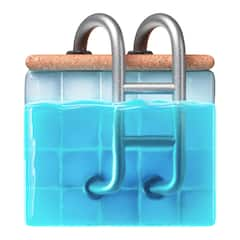
Places to stay near Tenerife
Book unique holiday rentals, homes and more on Airbnb
Top-rated holiday rentals near Tenerife
Guests agree: these stays are highly rated for location, cleanliness and more.
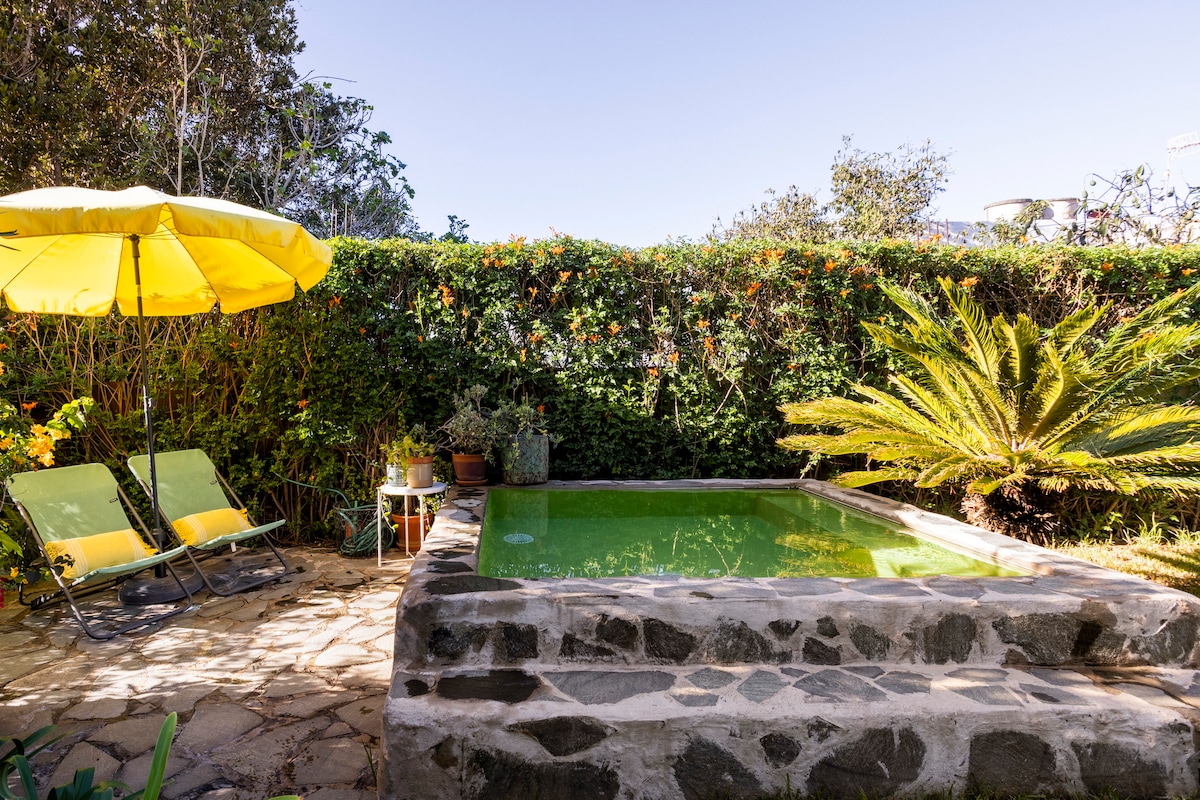
Stunning Inside & Out, Penthouse with Terrace and Tiny Pool
Smile while discovering every corner of this welcoming first floor home. Inside, enjoy the architectural details like the stone wall and the wooden cathedral ceiling. More than 70% of electricity consumption is self-generated thanks to our solar panels. Sustainable home :) Then head outside to the balcony for the views and the backyard, chill out area, and now, a cozy tiny pool (2x2m) for resting, sunbathing, and chill. Internet Fiber Optic 300mbps to work and enjoy it. Eduardo & Daniel are at your disposal to organice your holidays and help along your stay. Do not doubt to write us! It is difficult to find such an accessible property, in a traditional Canarian construction house, with quality materials, and in addition to being in the center of the town, it gives the feeling of being rural, surrounded by vegetation and where you can hear the singing of birds. Access and Terrace Through the external iron staircase, you go up to the first floor, where you will find the private terrace, which with a cheerful and careful decoration welcomes guests to their home. From it, you can see the horizon (in the distance, the sea) and enjoy the pleasant sunsets of the north of Tenerife. You will be constantly accompanied by the sound of the birds that nest around the house and in the green areas that surround it. The attic From the private terrace, you access this penthouse, unique for its structure and materials. In the diaphanous room as a loft, there are the kitchen and dining room, a living room, a bathroom, a work area and the bedroom space. What really stands out is the quality of the traditional construction and the perfect combination of the materials, one meter thick stone walls, and the roof of the traditional roof, gabled. The floors and ceiling of mulberry wood, give warmth to all the space that has been completely renovated thinking of a perfect stay. The entire attic receives natural light :) The kitchen The kitchen is fully equipped with fridge and freezer, microwave, induction hob, water heater and dishwasher, as well as all the necessary elements, electric coffee maker and toaster, and complements such as salt, sugar, oil or vinegar so that from the first minute you can start with the preparation of food and cooking preparing your own menu. You have a coffee machine and courtesy capsules to start the day in good shape. If you want to drink tea, remember that there will also be a teapot for you to prepare yours! The lounge The living space, cozy and well decorated as the rest of the house, has a comfortable sofa, equipped bar furniture (with drinks from many corners of the world, kindness from our guests), Smart TV with access to Netflix and a music device through bluetooth. Bathroom In the bathroom, there is a comfortable shower tray, and equipped with a hairdryer, bath towels and a set of towels for the beach are supplied. You'll find toilet paper, as well as soap for the sink and shower gel. In case you need additional sets of towels, you only have to request it, and it will be immediately placed at your disposal. Weekly a new set of bed and towels is delivered in case your stay exceeds seven days. Private garden Through a door, you have a private and exclusive area overlooking a pleasant garden that surrounds the entire property, with a relaxing space for relaxation, where you can sunbathe or have a drink by candlelight, or simply enjoy reading. In these spaces you have at your disposal an outdoor shower to cool off surrounded by greenery. Internet and workspace or reading The penthouse has wifi coverage throughout the house, and the study or work area has natural light with unbeatable views of the garden through the window, books in Spanish and magazines if you want to learn or read practicing our language, or simply enjoy reading. Rest. XL bed And finally, most importantly, you will rest in a bed equipped with a quality mattress, 1.60 by 2.00 meters, large enough to sleep peacefully until the next day. You have independent reading lights and a closet to store clothes, shoes or whatever you consider your luggage. For the rest, enjoy your stay in a place prepared with care to share the best vacation experience!!! The hosts, together with our Maltese Moma, live on the ground floor of the main house. The attic is accessed through an external staircase, completely independent. The parking and the laundry area (washing machine and dryer) are common spaces that are available to guests at all times. You access the garage through an automatic door with a remote control that we will provide you as soon as you get home :) In addition to the independent access to the attic through the exterior staircase, you will find the door that connects with the private garden where you can enjoy comfortable chairs and the outdoor shower to cool off. The main advantage is that, respecting the privacy of the well-defined independent spaces, you have us at your disposal at home, by phone or WhatsApp for any question, recommendation, surprise that you want to prepare your partner or problem that may arise during your stay. The environment is calm and within the historical centre of Tacoronte, a small town in the the north of the Tenerife island. At 10 minutes driving it is the beach and natural pool of Mesa del Mar and other small towns. From the penthouse you have easy access to the north motorway (TF5) to quickly visit the rest of the island. If you do not have a car, there are several bus lines in the neighborhood. Do not hesitate to write us if you have more questions! Whether you decide to rent a car during your stay and enjoy your own schedule and the convenience of having private parking, as if you do not need a car, the penthouse is well located in the center of the town, with a bus stop nearby that will allow you to move through the island to the main destinations. It is 50 minutes from Tenerife Sur airport (TFS airport) and 15 minutes from Tenerife North airport (TFN airport). Taxis are not expensive, and you can hire them by phone, or requesting such services.

10.000 m2 Tropical peaceful Garden near the Sea
Tropical peaceful Garden near the Sea, Fibre wi fi: Here it is possible to enjoy the silence, the sights to the sea and a garden full of style and captivation. Probably the mostly cosy corner is its elegant swimming pool and the outdoor lounge, inviting to enjoying languidly the sunny winter afternoons and the sunsets during the rest of the year. Amazing pool area. The finca is very close to the famous Playa del Socorro: relaxed atmosphere due to the beatiful sunsets & the Surfers competitions

Leo's House
New and spacious 100 square meter townhouse, located in the midlands of Garachico, with incredible views of the north coast of Tenerife and Mount Teide. Equipped with a private heated pool, state-of-the-art appliances (microwave, refrigerator, washing machine, etc.), it has a comfortable double bed and two single beds as well as two large closets. Terrace with fantastic views. Natural environment surrounded by hiking trails. ESHFTU00003800200001888000100000000000VV-38-4-00879310

Casa Lava, Luminosa Casa con Magníficas Vistas
Casa con maravillosas vistas al mar, amplia terraza con mobiliario de exterior y con jacuzzi sobre el jardín de plantas exóticas y plantación de aguacates . Perfecta para disfrutar de la tranquilidad, y fantástica, para volver después de un día de excursión y relajarse en su jacuzzi con estupendas vistas. Luminoso dormitorio , acogedor salón y cocina con salida a la terraza y al jardín. Casa Lava es ideal para parejas, no es segura para niños ni bebés,hay zonas sin barandilla
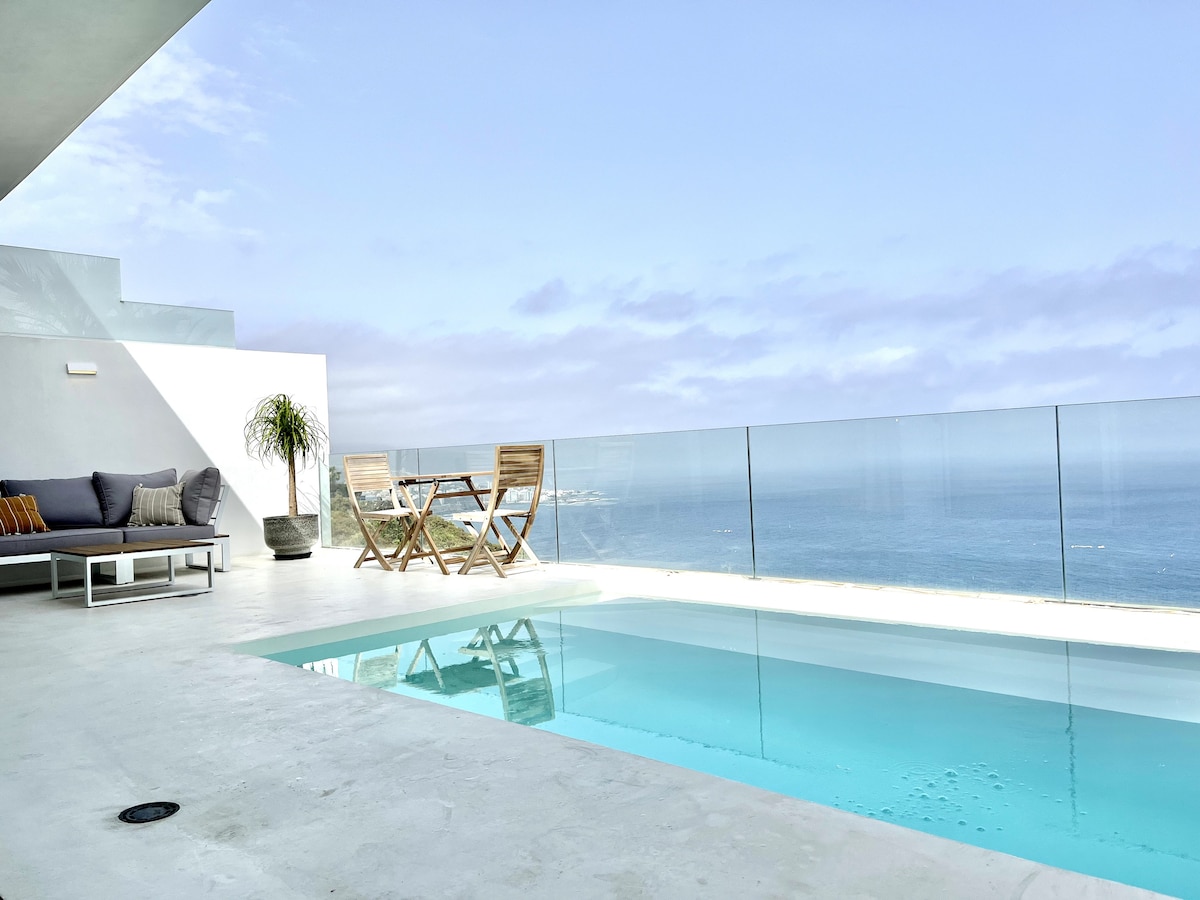
Suite Vista Mar. Romantic sunset
Suite con piscina en acantilado, privilegiada ubicación con atardeceres espectaculares. Diseño elegante, amplias ventanas que enmarcan vistas al mar y un ambiente exclusivo. La suite cuenta con una piscina privada donde relajarse mientras se contempla el sol desaparecer en el horizonte. Espacios interiores amplios y modernos, equipados con todas comodidades para sentirte como en casa. Un refugio único para disfrutar de momentos inolvidables en completa armonía con la naturaleza.

Cliffhousetenerife I - Apartment
The house is located 70 meters above the sea on a cliff in the immediate vicinity of the coastal path. It offers a breathtaking nature experience on one of the most beautiful coastlines of Tenerife The popular village of Toscal can be reached in 10 minutes The house is accessible only by stairs. Also check out our new CliffhouseTenerife2, a House for up to 6 people, with private pool & garden. The pool is not secured for small children, parents are liable for their children
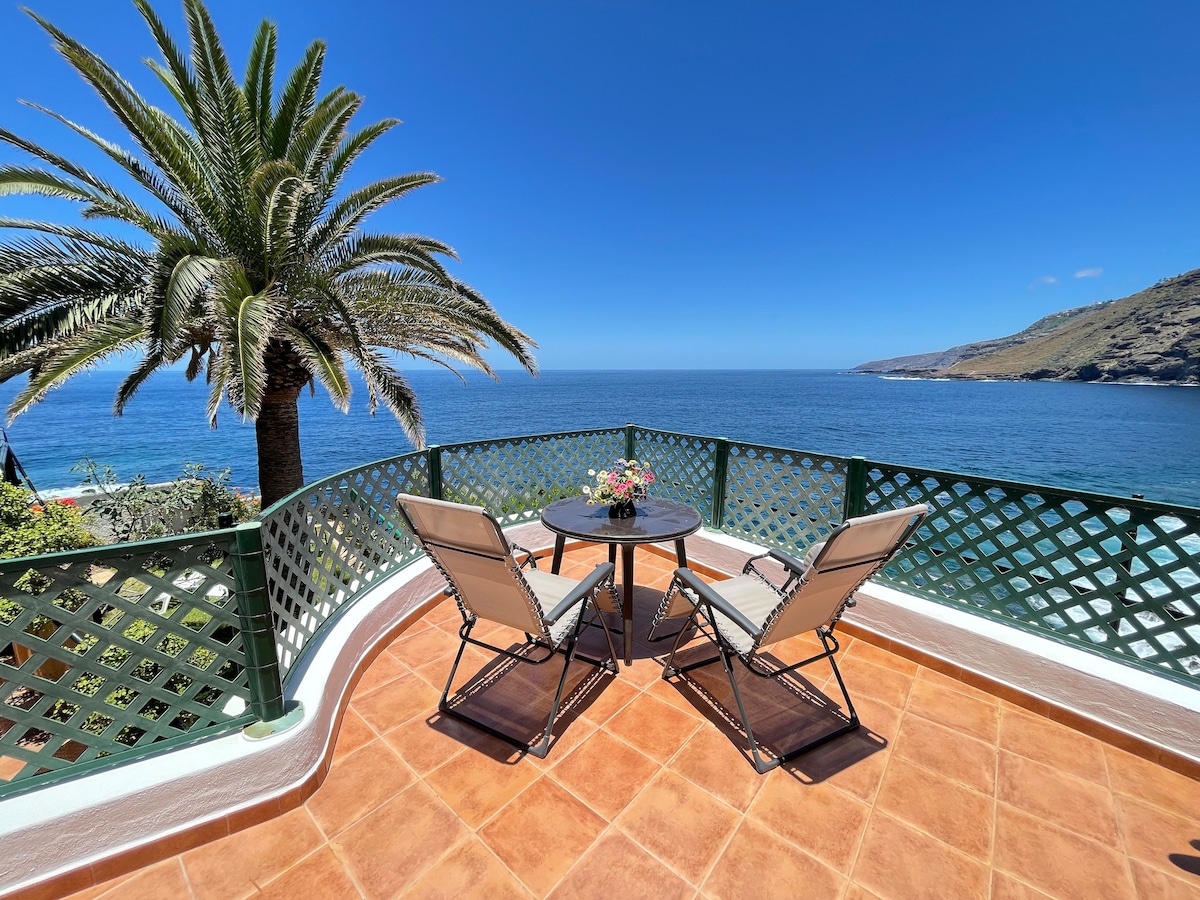
Trinimat vacation home by the sea Tenerife North 1
Trinimat seaside vacation home Tenerife North No. 1, living room overlooking the sea and seating area, large TV, desk and 300 Mbit fiber optic Internet, ideal for teleworking, bedroom with a 180 × 200 bed, bathroom. Well-equipped kitchen and bathroom, terrace with stunning ocean views, private garden with shower and sun loungers. In addition to the Airbnb final price, weekly cleaning costs (€60) must be paid and are not included in the Airbnb final price.
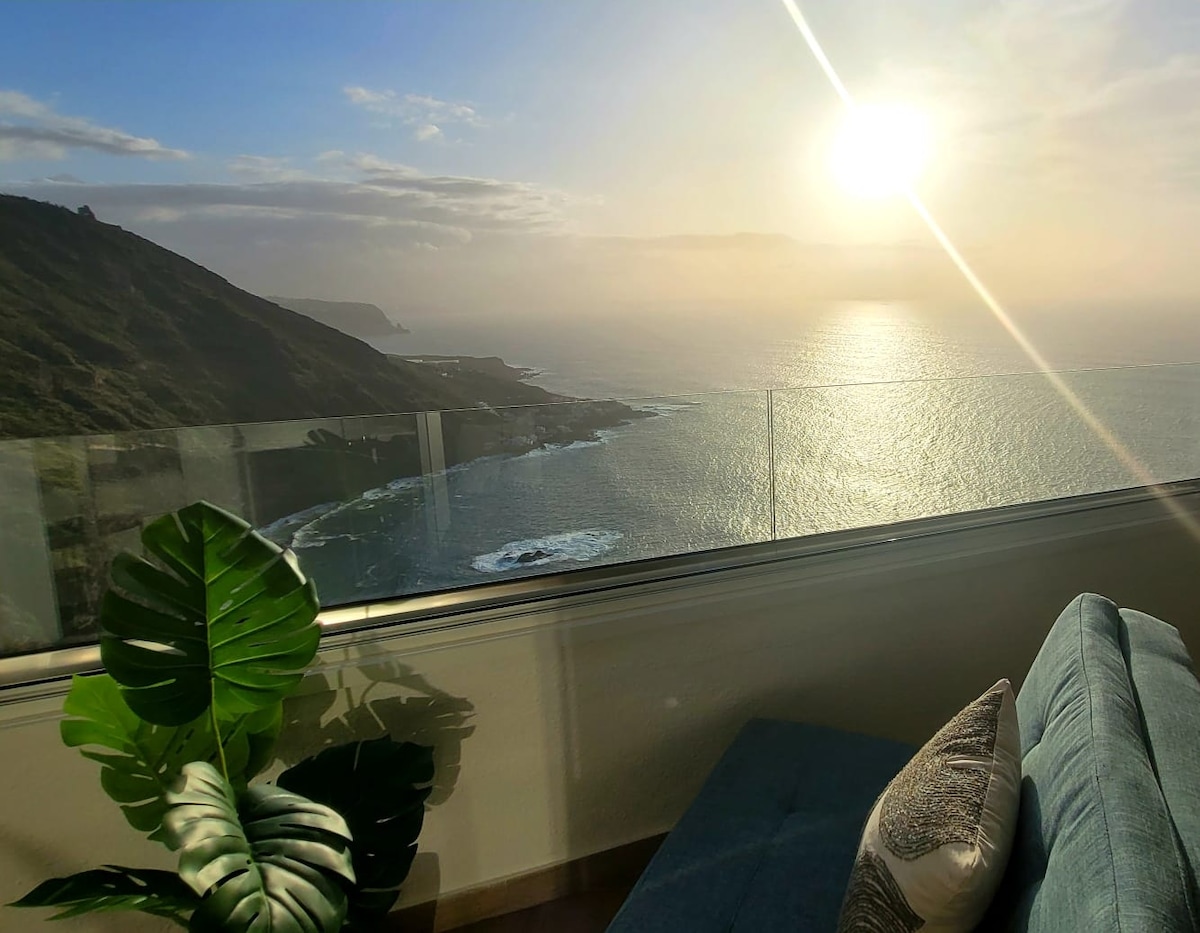
"Bella-Vista Suite": Endless views over the ocean
“Bella-Vista Suite" bien merece su nombre: ubicado en la ladera de un impresionante acantilado, tendrá la sensación de estar flotando sobre el océano a 220 metros de altura. Sin duda, podrá disfrutar de las mejores vistas infinitas de la costa norte de Tenerife, que arrancan con el majestuoso Océano Atlántico bajo sus pies, en la cala natural que alberga al complejo, y se extienden hacia el horizonte, culminando en el magnífico Teide sobre el valle.

The Centennial Pine 3
Modern Solar Powered Home, the house is off-grid, meaning it gets its electricity from the sun and a standby generator if needed. Restored in April 2021 the cottage is just before Teide National Park. Home has full cooks open kitchen and living room with all one might need, gas stove and modern appliances. Ensuite bathroom with fully functional sink, shower and toilet. Please read the information on how to get here and check in after booking.

Green House
The house set right on the ocean coast in a local friendly village with natural swimming pool. Ideal for relaxing, fishing and to feel local culture holiday. Sheltered under volcanic cave and listening to crashing waves you can feel true beauty of Tenerife island we still can’t get enough of ourselves. Living next door it is our pleasure to assist our guests during their stay. Studio type tiny house ideally set up for couples...

The goat farm
Located in Masca, our charming Airbnb is the perfect place for couples looking for a romantic getaway. you will be seduced by a breathtaking view of the breathtaking landscapes of Casablanca, admiring the sparkling sea in the distance, let yourself be lulled by the sweet melody of nature around you. Our accommodations combine comfort and traditional charm, creating a warm and intimate atmosphere and unforgettable moments.
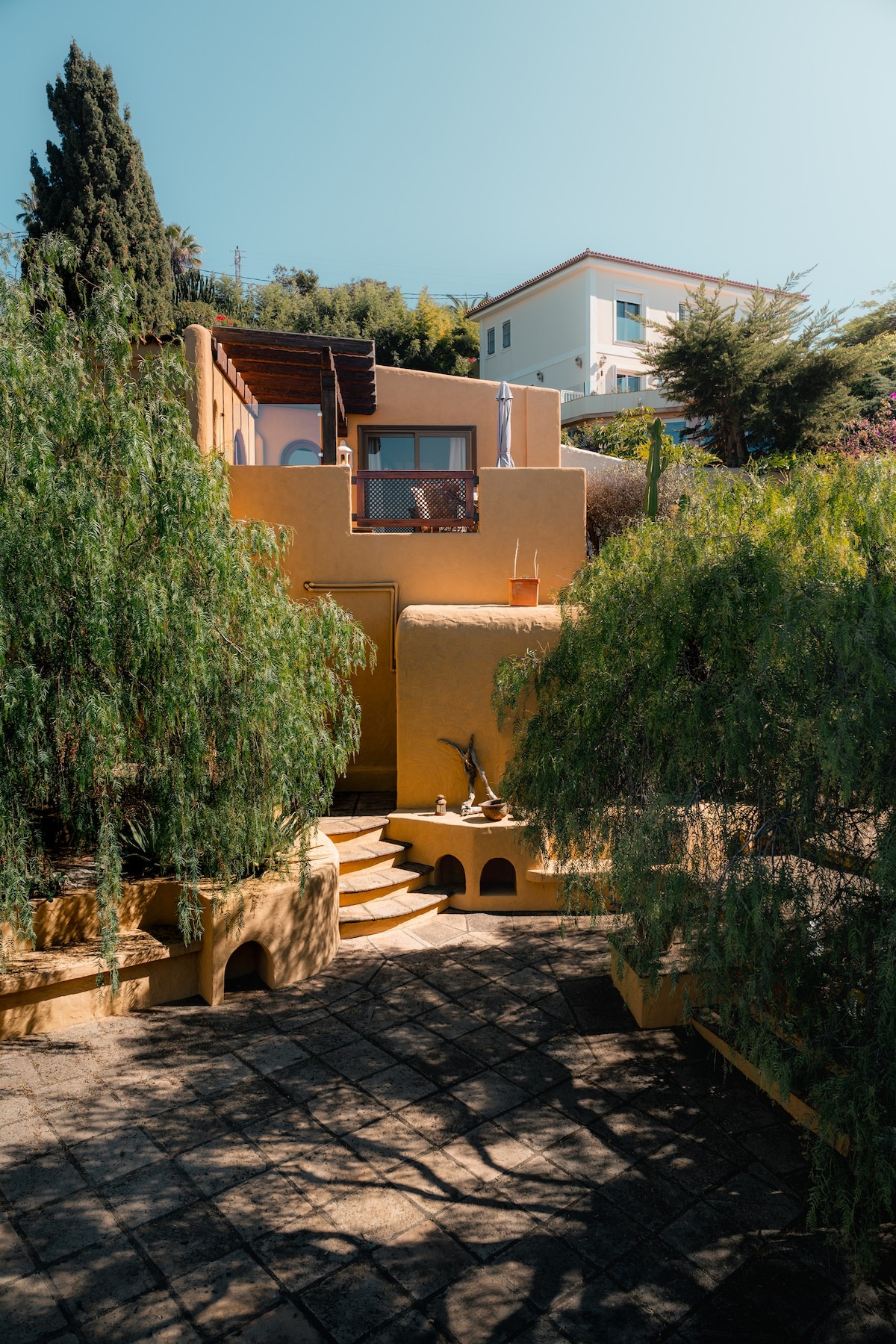
The Shelter: Delia Bungalow, Sauna, Heated Pool
El Refugio is located on the cliffs of La Matanza approx 250 m above the sea. It is located in an absolutely exposed position in the sun belt of the North and is also known as the sunniest community on the north coast of Tenerife. The nature reserve Costa Acentejo, with its circular hiking trail and path to the sea, starts just a few steps from the property. Relax in a calm, rural environment far away from the beaten track!
Popular amenities for holiday rentals near Tenerife
Apartment rentals with wifi
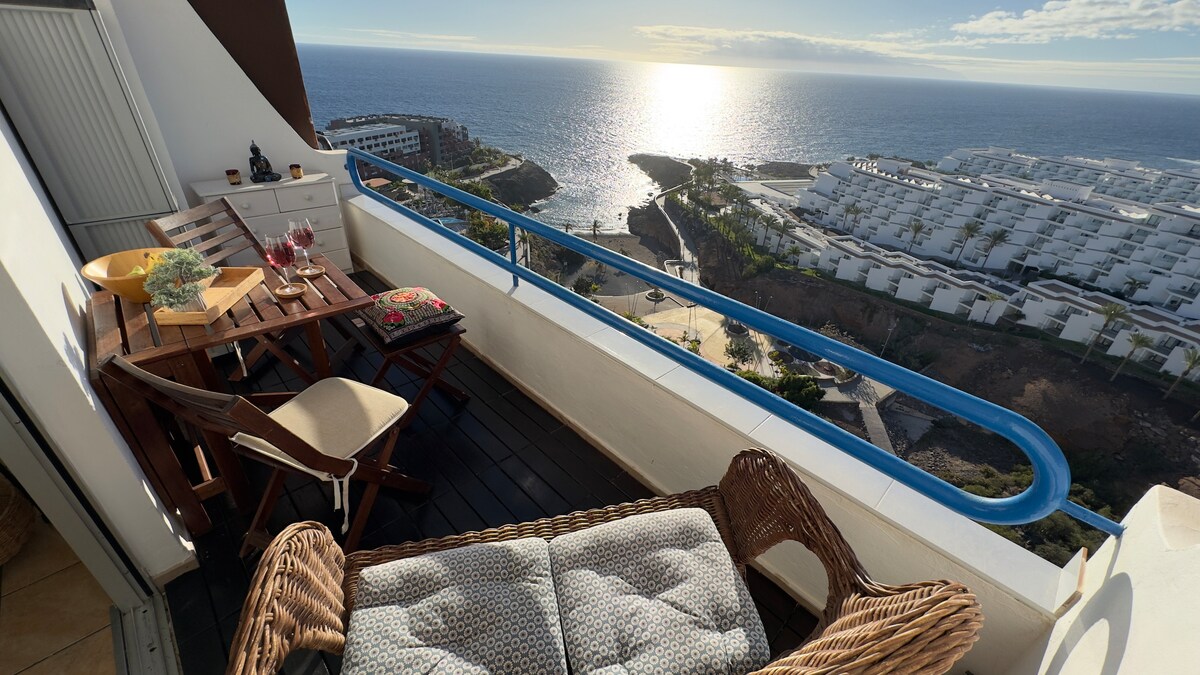
Beautiful studio with amazing view Playa Paraiso

Frontline views of Bajamar relax.
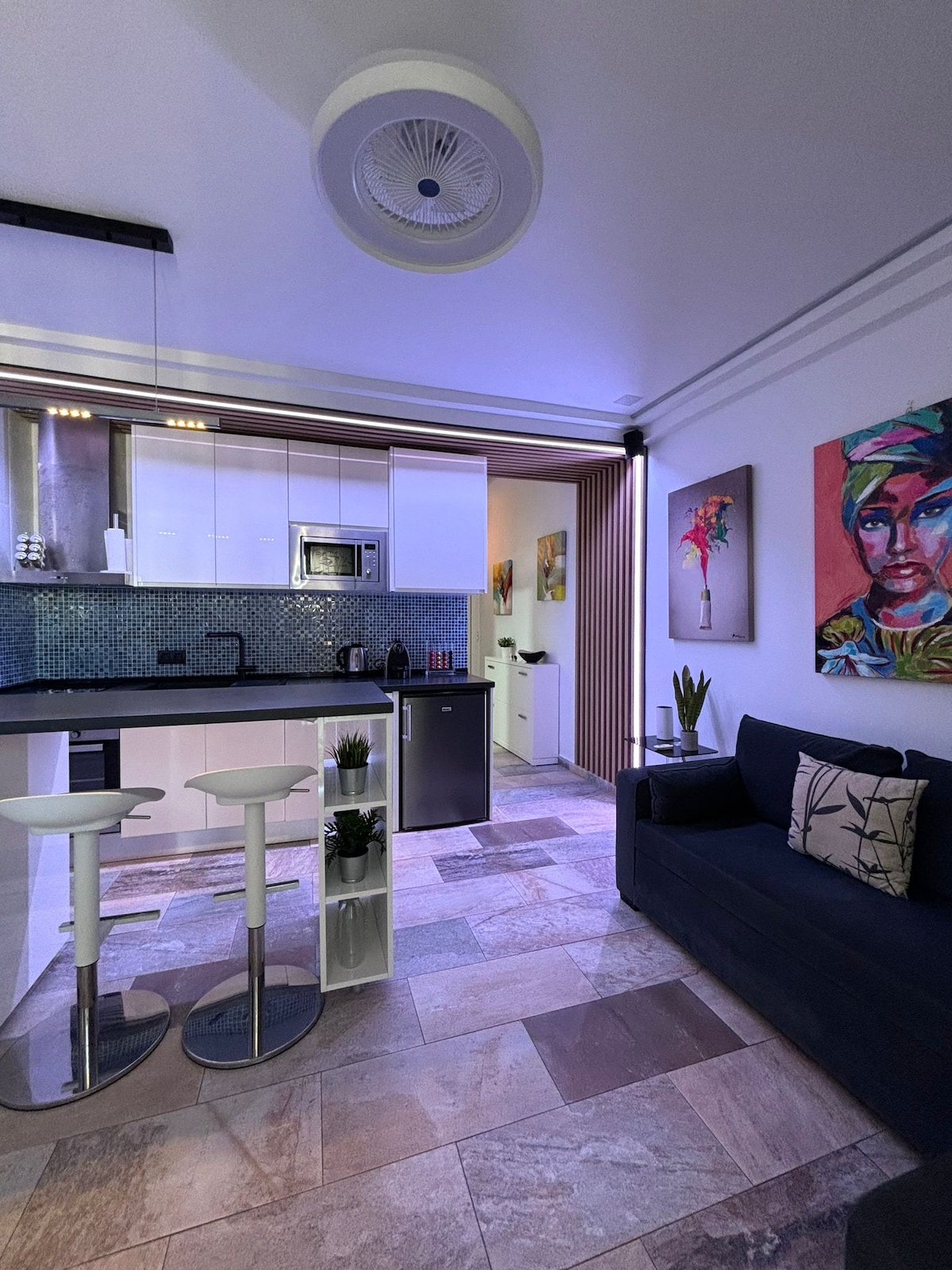
The dentist´s house

Lush tropical patio, private, in historic center
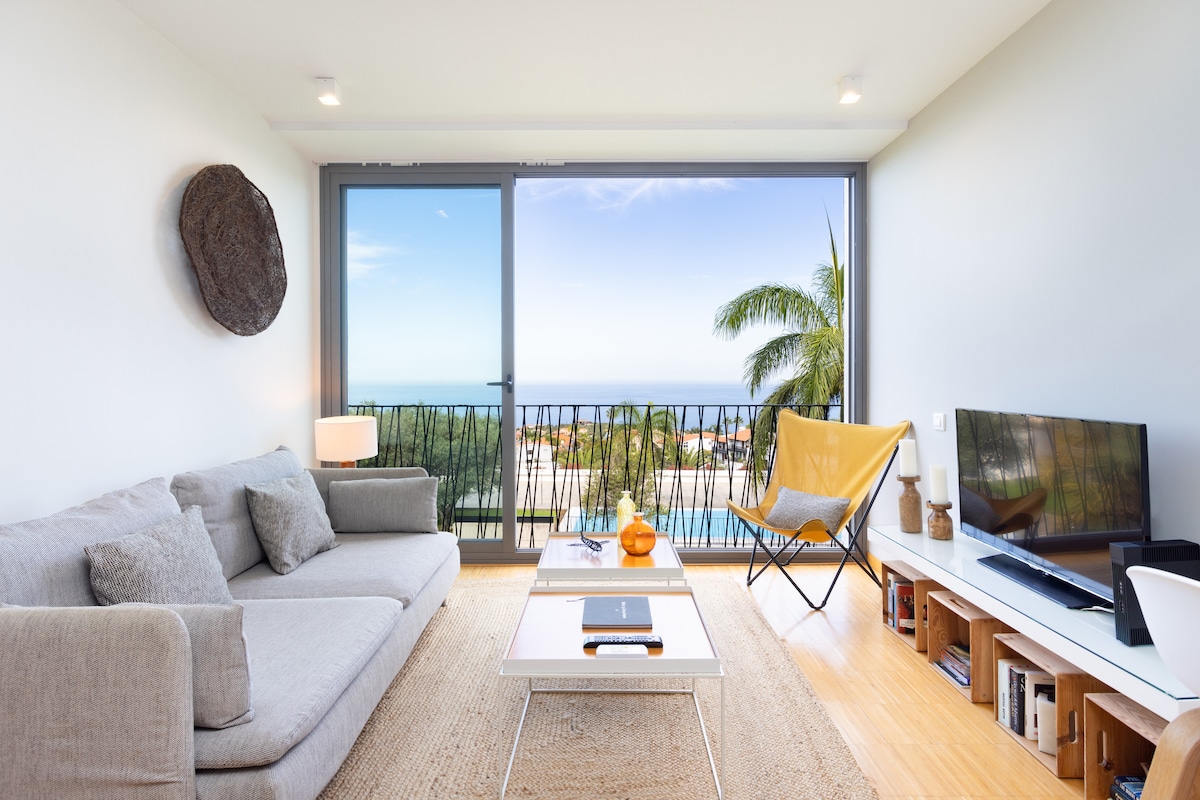
AirCon - Design and bright

Exclusive oceanfront place - VIEW and tranquility
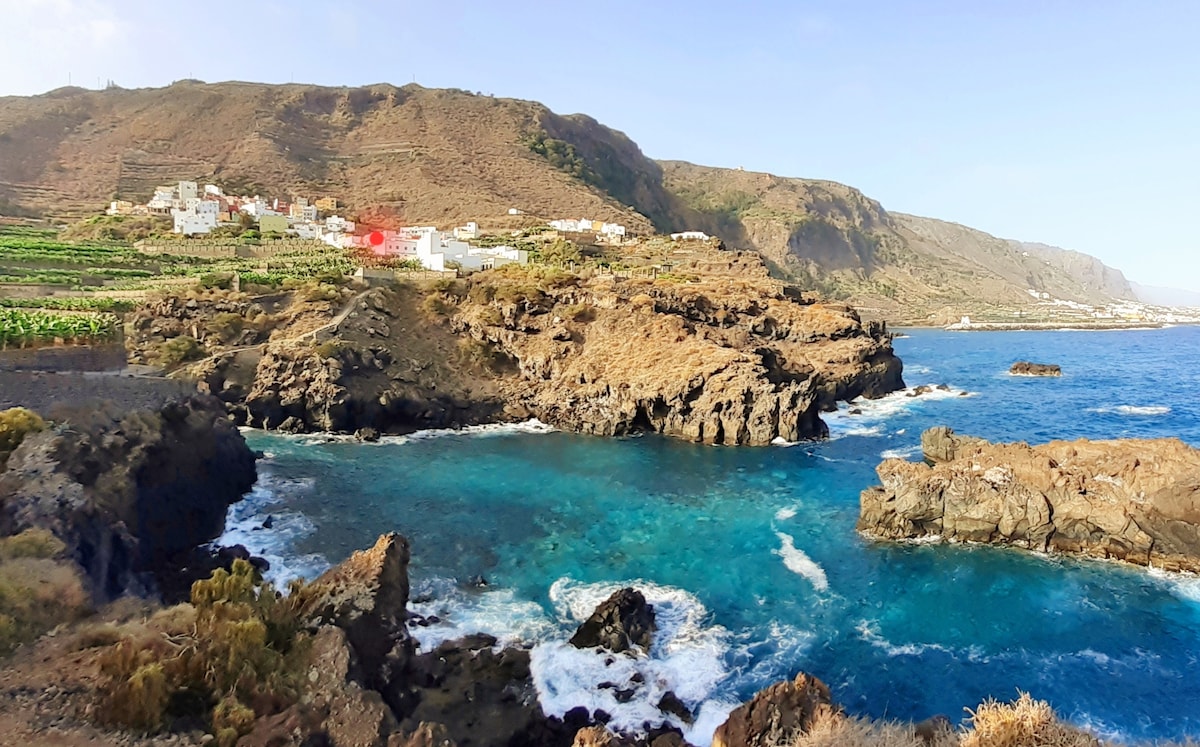
Spectacular views of the Roque de Garachico
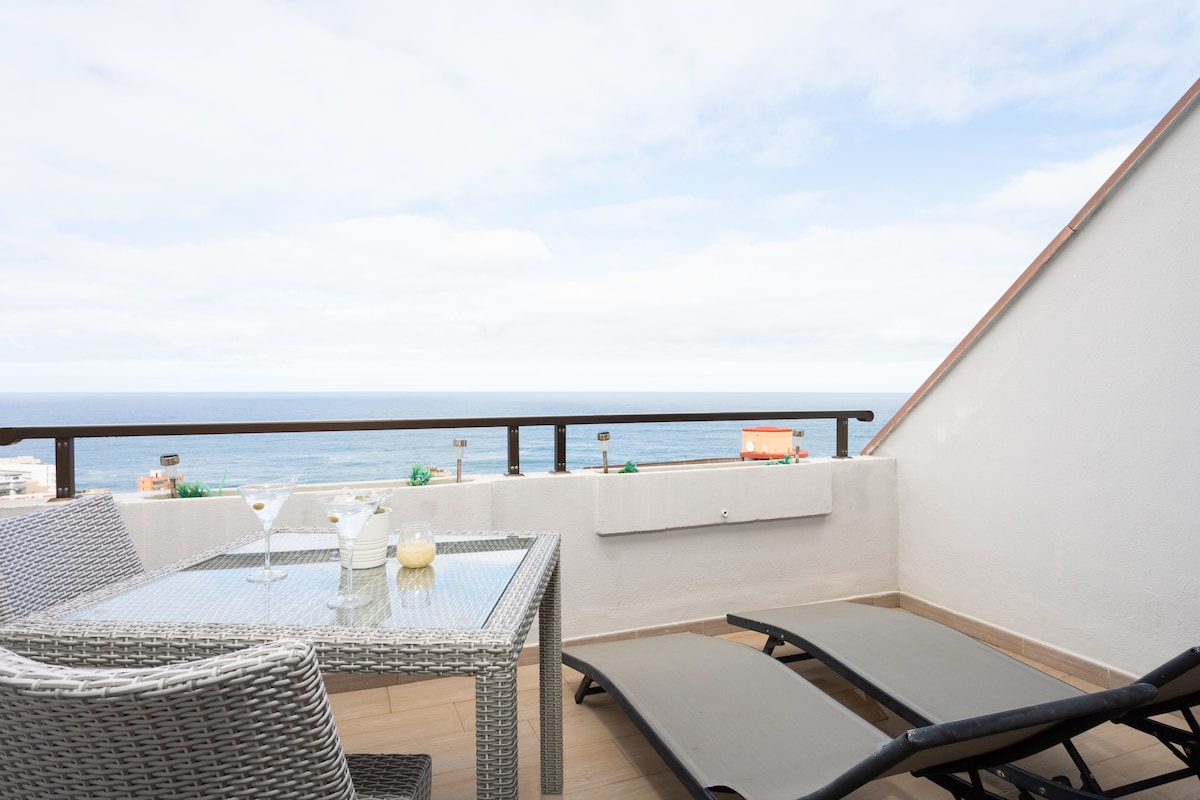
Bajamar Penthouse
Family-friendly house rentals
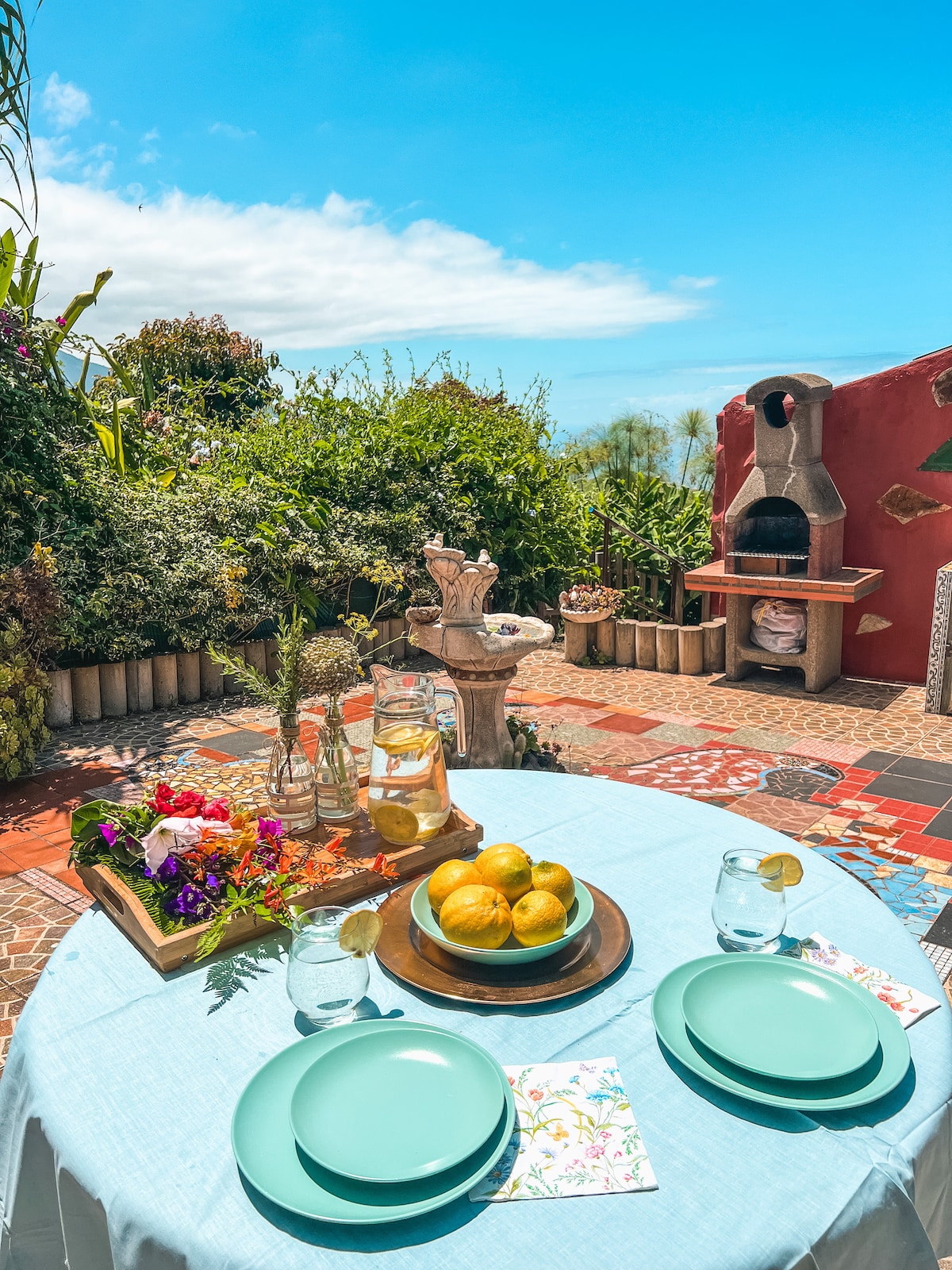
Quaint artist’s cottage in marvelous nature

The Enchanted House in the Forest

Villa El Riego

Tenerife/Santiago del Teide/Room-Loft/Mila 1

House with spectacular views and heated pool

"El Palomar" A secret oasis in the north of Tenerife
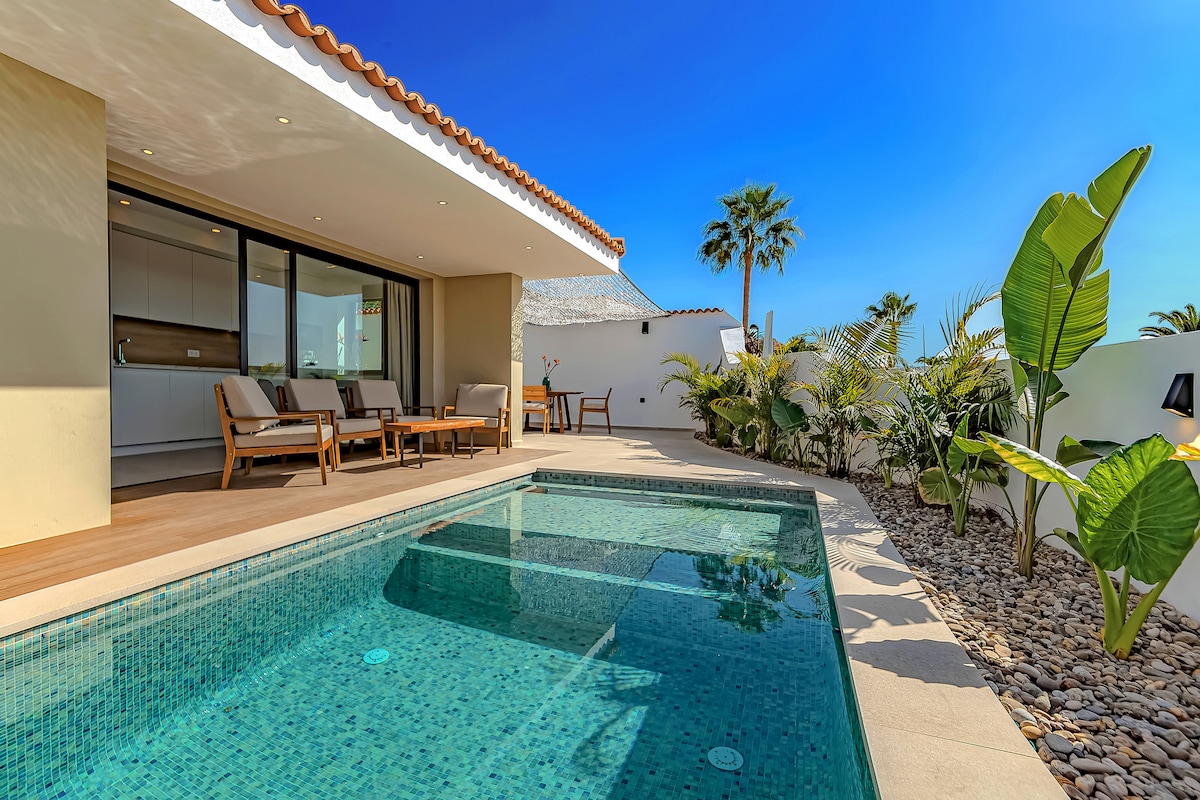
Private heated pool and ocean views

Ocean views, on an organic farm, VV SOFIA
Apartment rentals with air conditioning
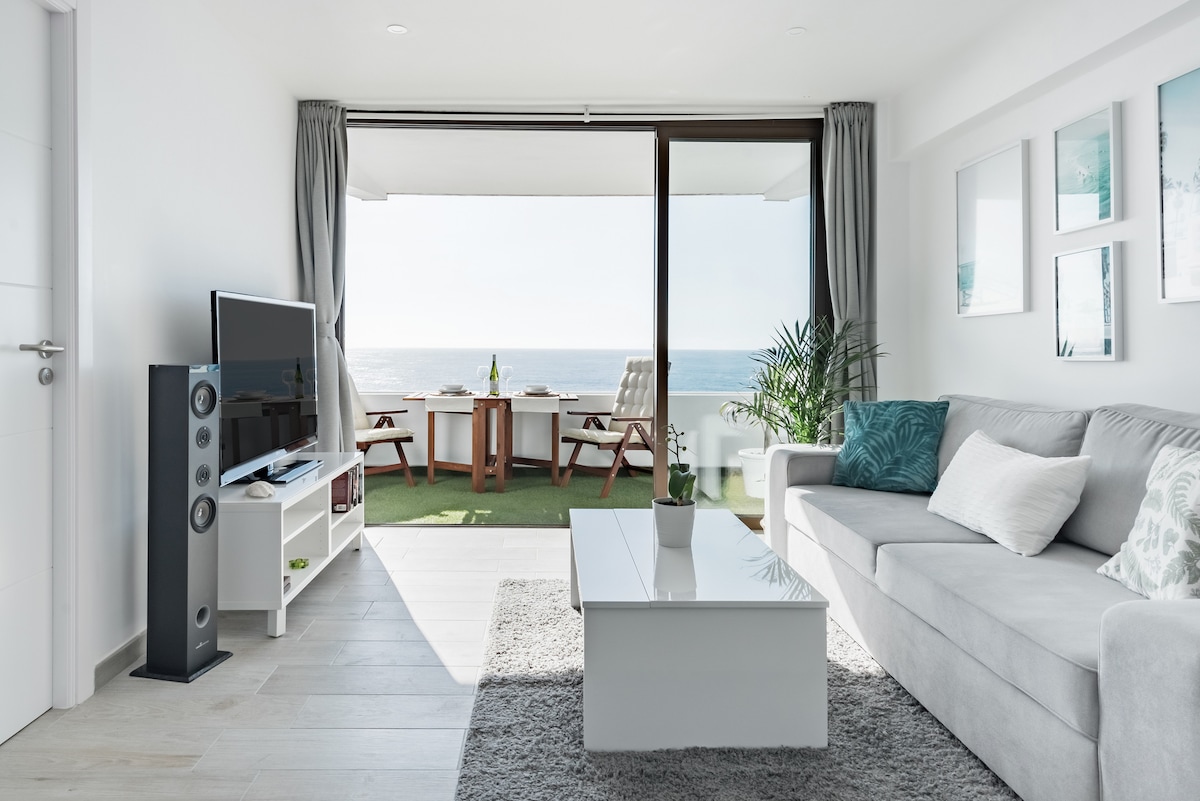
Sunset Paradise Tenerife | The Romantic Seascape

Yellow Houses

Apartment With Amazing Views
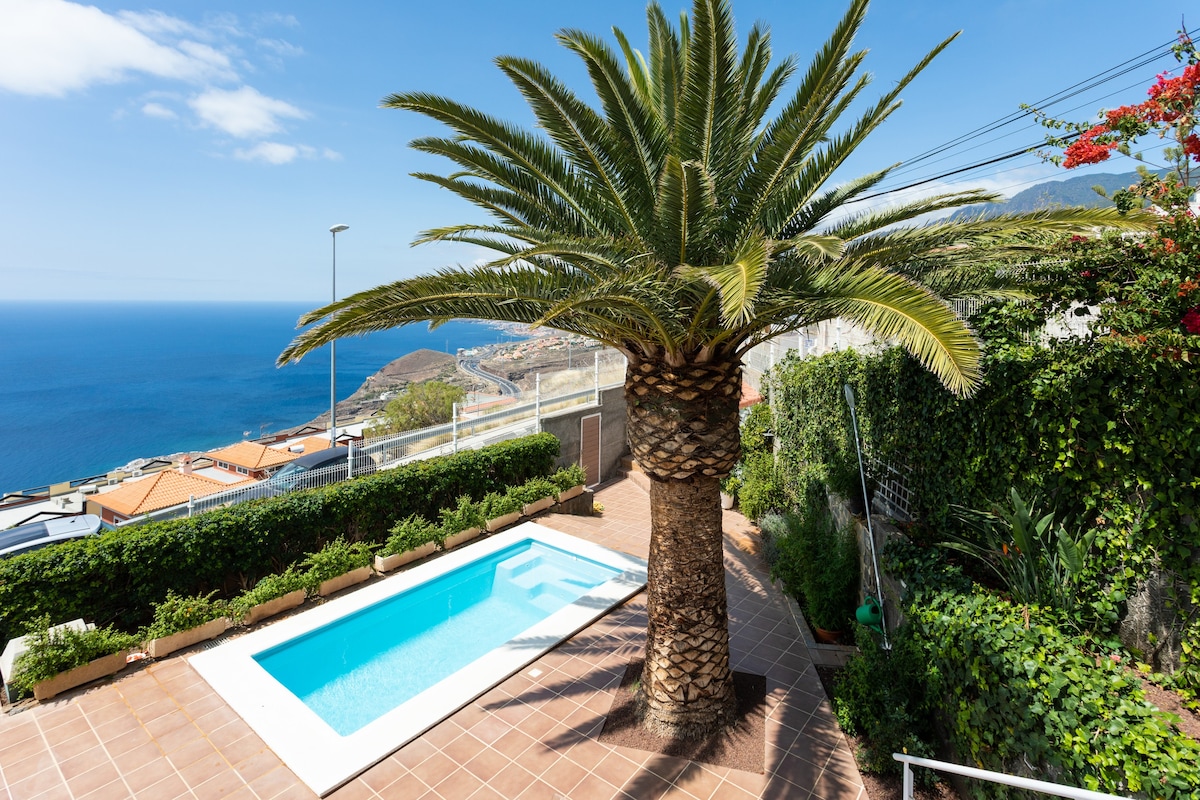
Romantic apartment with views and jacuzzi pool

"FEEL GOOD" vacation apartment with sea view and pool
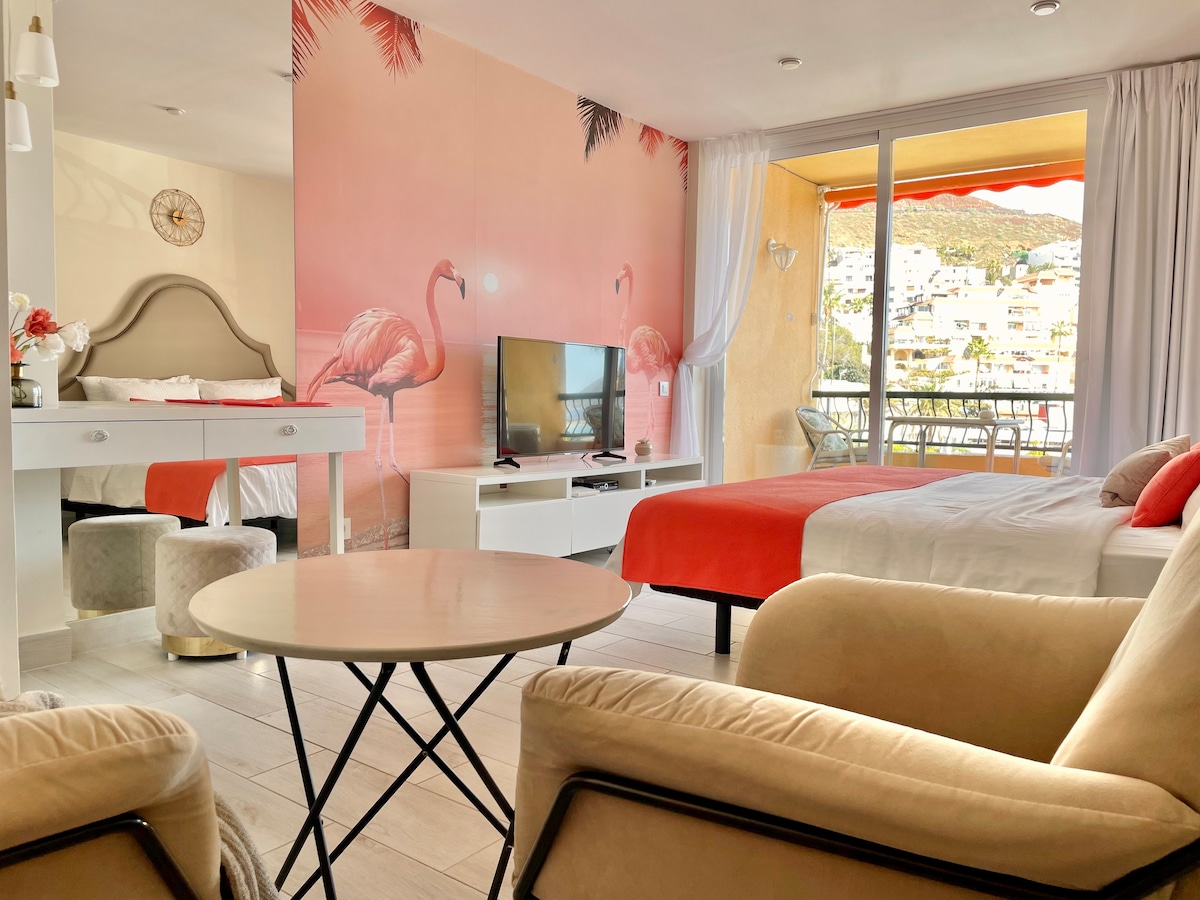
Beach. Cozy place for a wonderful vacation.

Exclusive art apartment
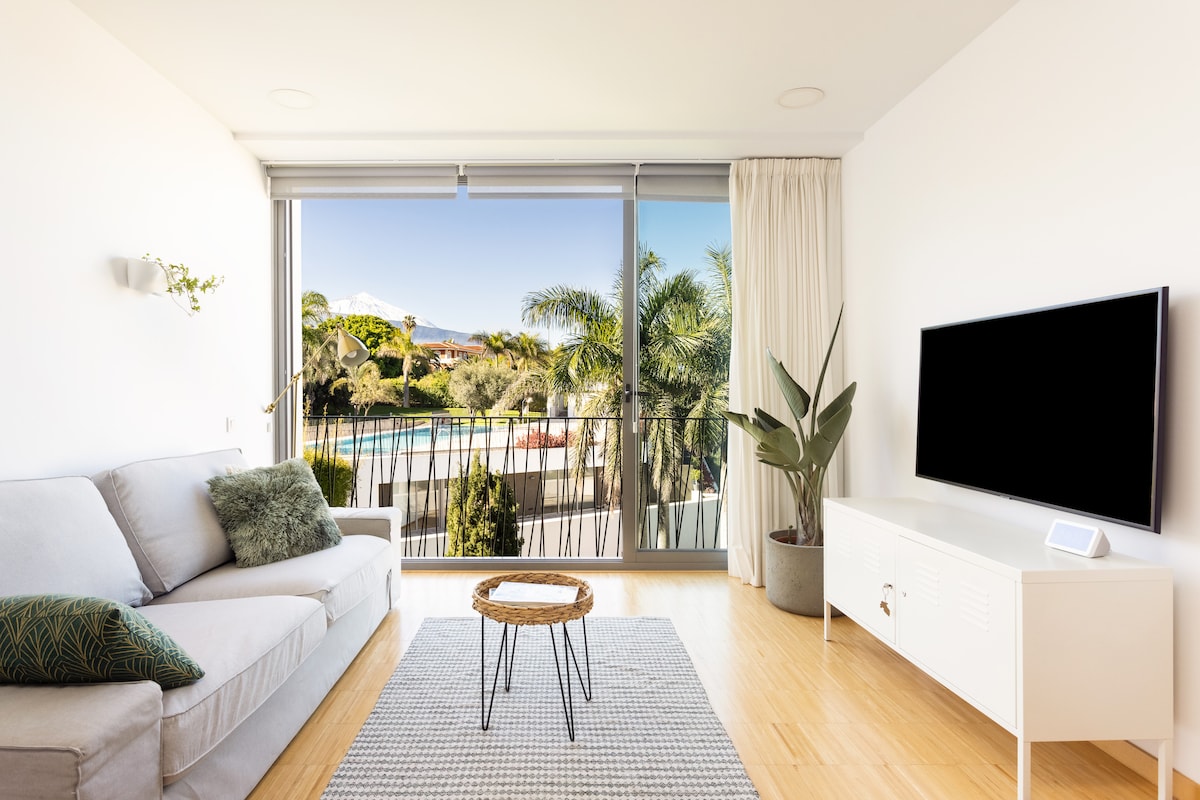
Design apartment with Mount Teide and sea views
Other great holiday rentals near Tenerife

The Centennial Pine 4

Casa Azul private heated pool.
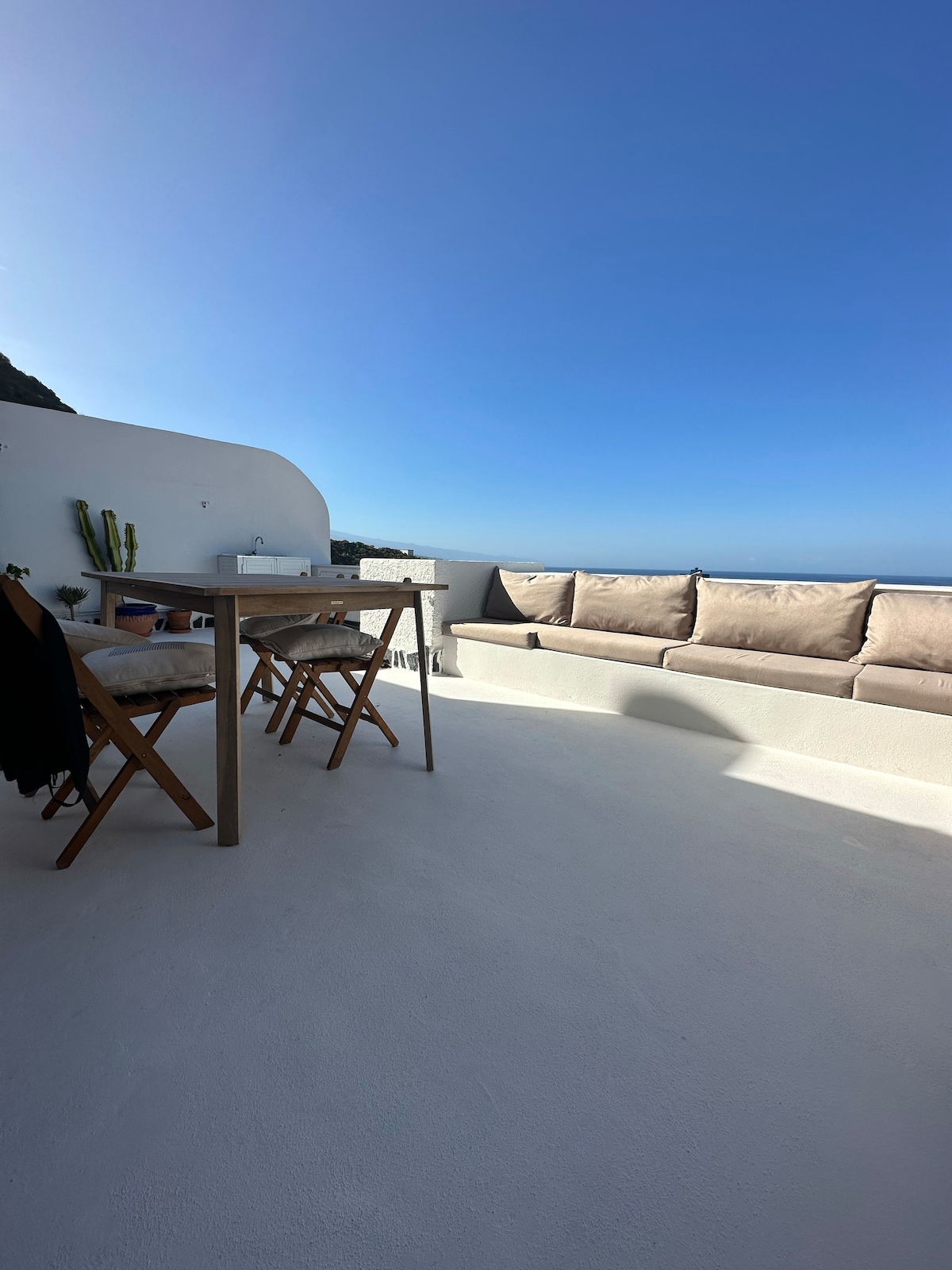
Wake Up to the Ocean: Cozy Retreat with Terrace
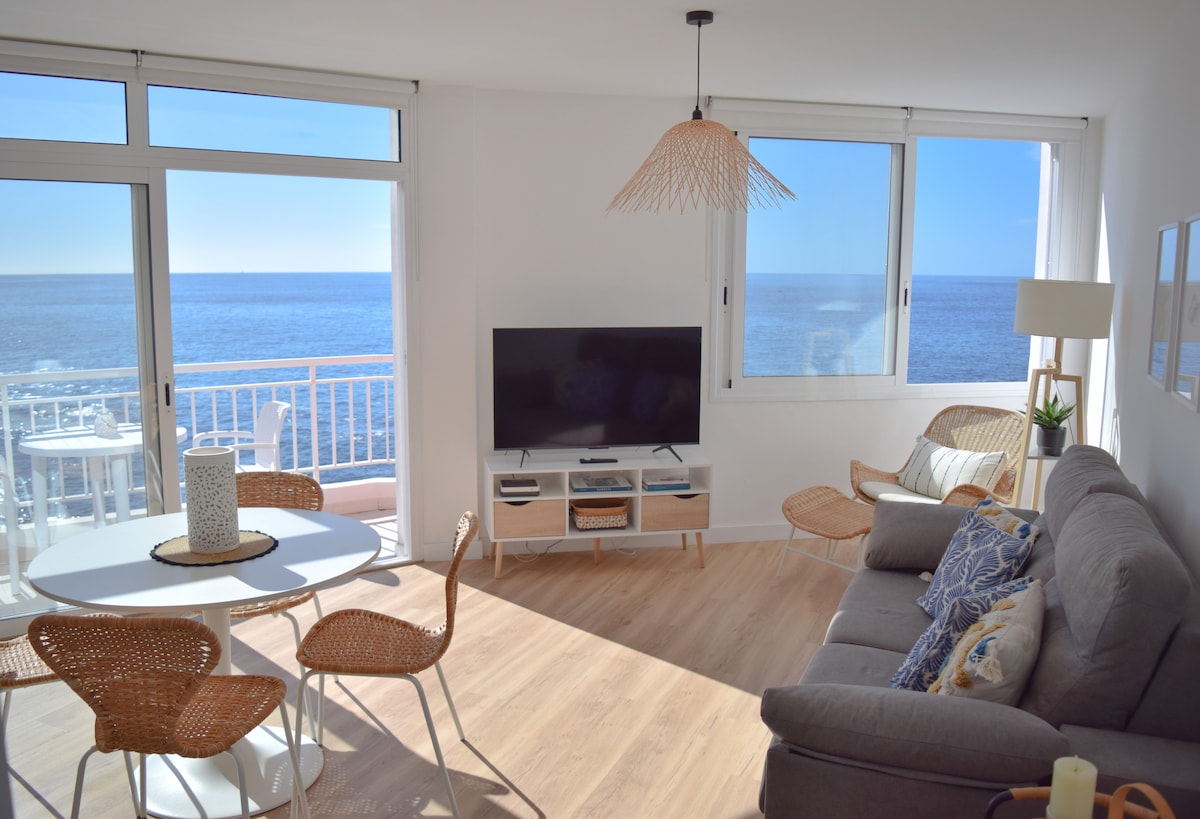
Azure Haven Playa San Juan (Playa San Juan)
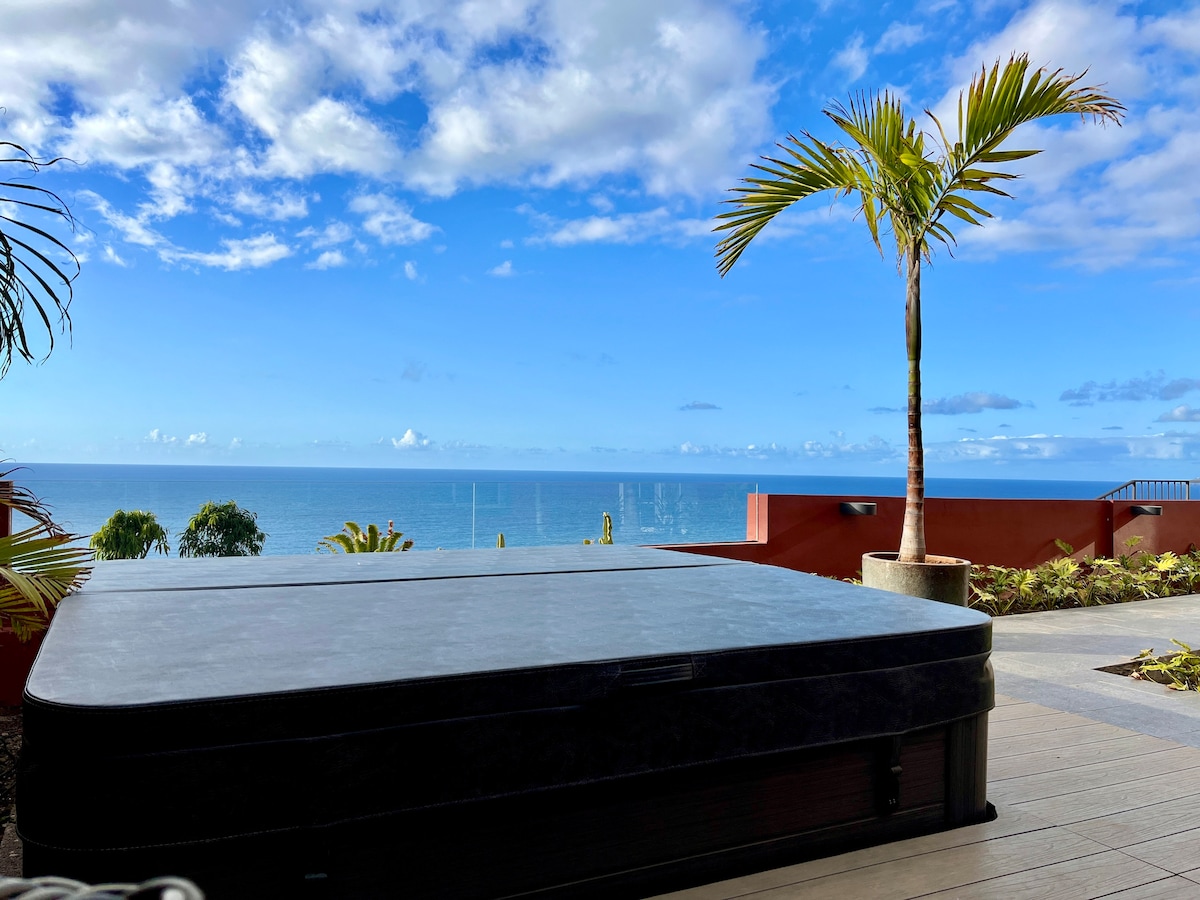
Susurro del Mar Apartment
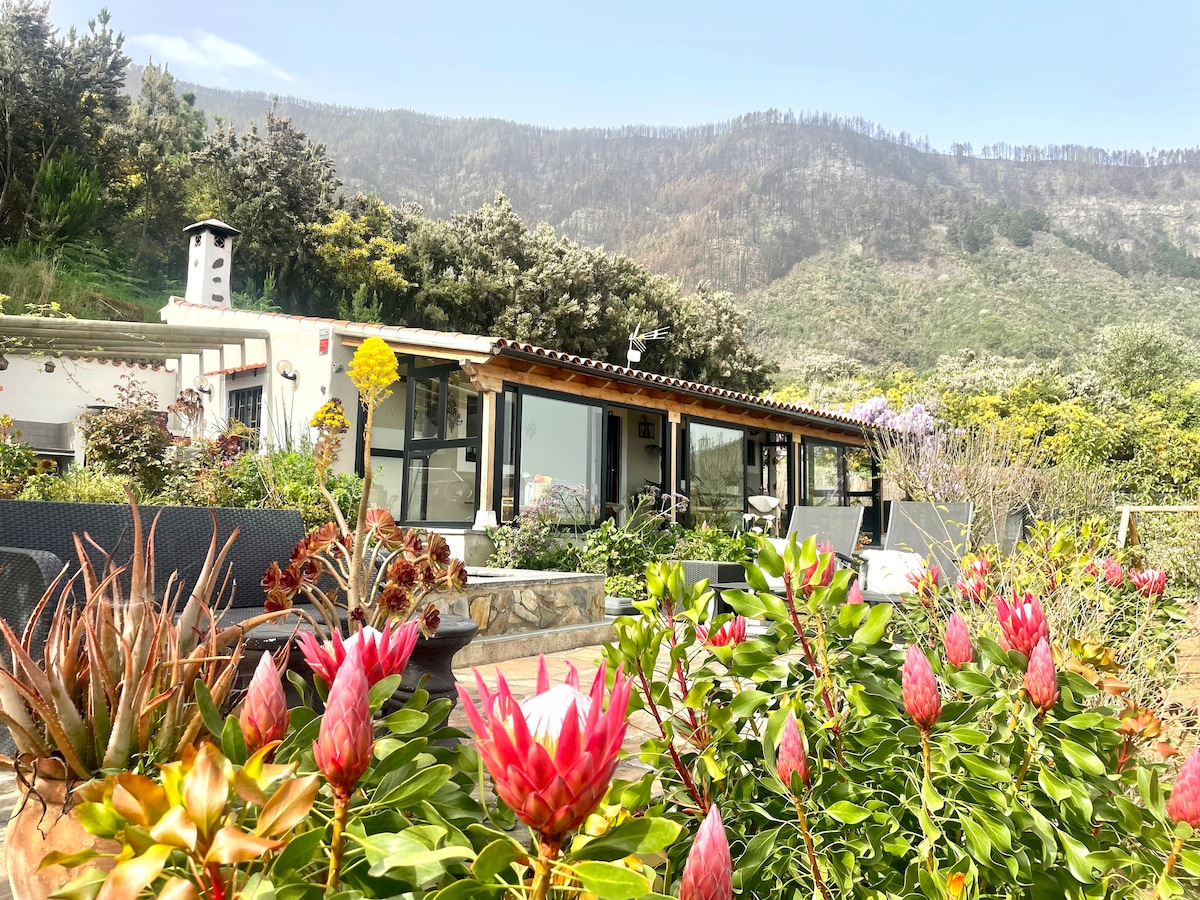
Sueña Rural-LA NUBE in Los Realejos

Ocean Views and Luxury in Bajamar! Boutique Apartment
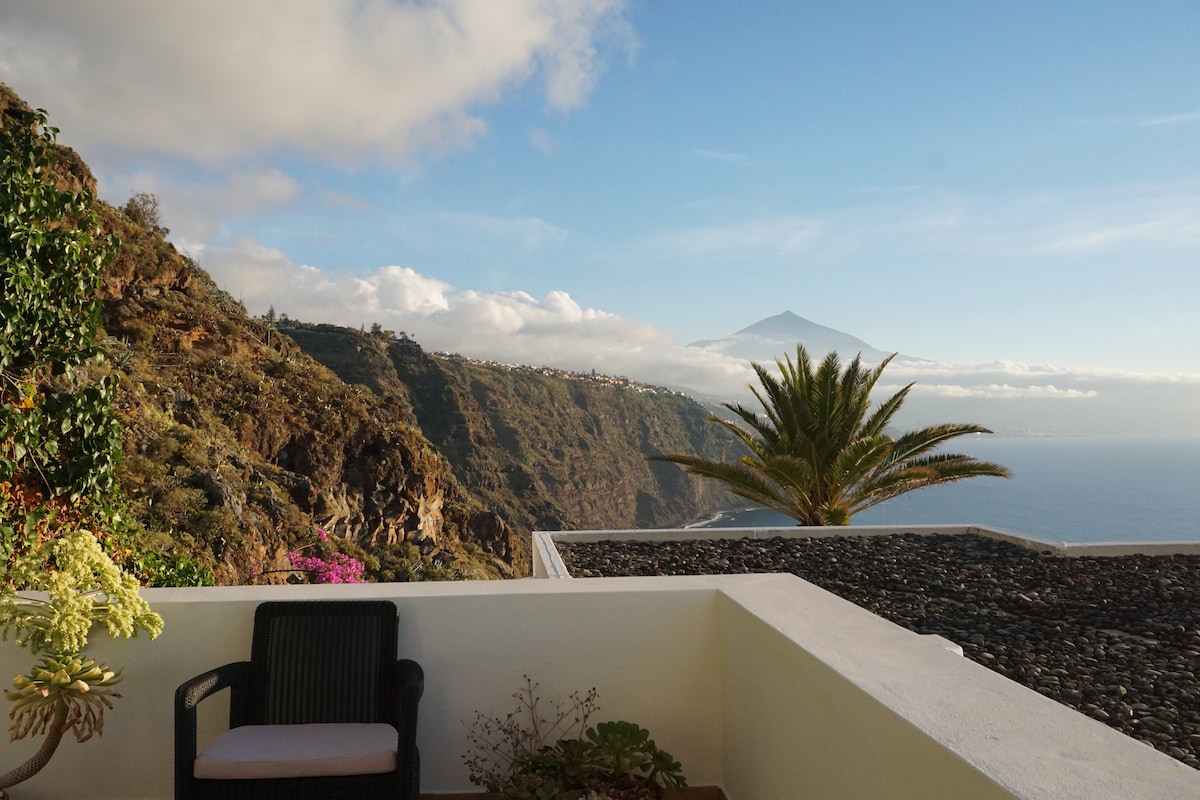
Viewpoint 5
Frequently Asked Questions
Where is Tenerife located?
Tenerife is one of the Canary Islands, which are part of Spain and situated in the Atlantic Ocean near the northwest coast of Africa. The island is known for its volcanic landscapes, historic towns, and coastal areas.
When is the best time to visit Tenerife?
Tenerife sees mild, spring-like weather most of the year, with warmer temperatures from late spring through early autumn. Many visitors prefer these periods for outdoor activities, as rainfall is lowest and the island’s climate feels particularly inviting.
What are some things to do near Tenerife?
You can explore volcanic scenery in Teide National Park, wander traditional markets in towns like La Laguna, or enjoy local cuisine along the coast. Many travelers also relax on the island’s beaches and take part in marine excursions.
How is the weather near Tenerife?
Tenerife has mild winters with temperatures ranging from 35–49°F (2–9°C), and summers that are typically warm, reaching 56–73°F (13–23°C). Rain is most common in winter and early spring, while summers tend to be dry and sunny.
Quick stats about holiday rentals in Tenerife

Total holiday rentals
Explore 17,240 holiday rentals in Tenerife

Verified guest reviews
Over 502,790 verified reviews to help you choose

Family-friendly holiday rentals
8,000 properties offer extra space & child-friendly amenities

Pet-friendly holiday rentals
Find 2,380 rentals that welcome pets
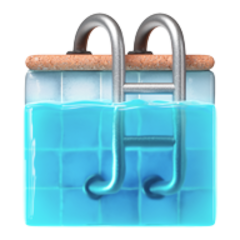
Holiday rentals with a pool
10,000 properties feature pools

Rentals with dedicated workspaces
7,380 properties have a dedicated workspace

Wifi availability
16,900 of Tenerife holiday rentals include wifi access

Popular amenities for guests
Guests love Kitchen, Wifi and Pool across Tenerife rentals

4.7 Average rating
Tenerife stays receive an average rating of 4.7 out of 5 from guests
Destinations to explore
- Rentals with an accessible-height toilet Tenerife
- Fitness-friendly rentals Tenerife
- Holiday home rentals Tenerife
- Cabin rentals Tenerife
- Smoking-friendly rentals Tenerife
- Guest house rentals Tenerife
- Mansion rentals Tenerife
- Rentals with an accessible-height bed Tenerife
- Rentals with lake access Tenerife
- Aparthotel rentals Tenerife
- Rentals with a patio Tenerife
- Waterfront rentals Tenerife
- Rentals with an EV charger Tenerife
- Rentals with a washing machine and dryer Tenerife
- Rentals with breakfast Tenerife
- Earth house rentals Tenerife
- Rentals with a fireplace Tenerife
- Apartment rentals Tenerife
- House rentals Tenerife
- Serviced apartment rentals Tenerife
- Rentals with a sauna Tenerife
- Townhouse rentals Tenerife
- Bed and breakfasts Tenerife
- Cave rentals Tenerife
- Chalet rentals Tenerife
- Hostel rentals Tenerife
- Family-friendly rentals Tenerife
- Rentals with a kayak Tenerife
- Villa rentals Tenerife
- Loft rentals Tenerife
- Boutique hotels Tenerife
- Rentals with pools Tenerife
- Rentals with a firepit Tenerife
- Hotel rooms Tenerife
- Flat rentals Tenerife
- Cottage rentals Tenerife
- Rentals with outdoor seating Tenerife
- Tiny house rentals Tenerife
- Bungalow rentals Tenerife
- Beach house rentals Tenerife
- Rentals with beach access Tenerife
- Private suite rentals Tenerife
- Beachfront rentals Tenerife
- Farm stay rentals Tenerife
- Rentals with a hot tub Tenerife
- Ski-in/ski-out rentals Tenerife
- Rentals with a cinema Tenerife
- Pet-friendly rentals Tenerife
- Playa Del Duque
- Playa de las Américas
- Playa de Las Teresitas
- Parque Santiago Iii
- Siam Park
- Golf del Sur
- Port of Los Cristianos
- Playa Amarilla
- Puerto de Santiago
- Playa de la Tejita
- Fuente Playa de Las Vistas
- Playa del Roque de las Bodegas
- Playa Torviscas
- Loro Park
- Playa del Médano
- Playa Jardin
- Playa del Socorro
- Playa de las Gaviotas
- Aqualand Costa Adeje
- Playa de Martiánez
- Teide National Park
- Garajonay National Park
- Playa de Ajabo
- Parque Maritimo Cesar Manrique
- Things to do Tenerife
- Nature and outdoors Tenerife
- Art and culture Tenerife
- Food and drink Tenerife
- Sports activities Tenerife
- Things to do Santa Cruz de Tenerife
- Nature and outdoors Santa Cruz de Tenerife
- Food and drink Santa Cruz de Tenerife
- Art and culture Santa Cruz de Tenerife
- Sports activities Santa Cruz de Tenerife
- Things to do Canary Islands
- Art and culture Canary Islands
- Food and drink Canary Islands
- Tours Canary Islands
- Nature and outdoors Canary Islands
- Sightseeing Canary Islands
- Sports activities Canary Islands
- Things to do Spain
- Nature and outdoors Spain
- Art and culture Spain
- Entertainment Spain
- Sightseeing Spain
- Wellness Spain
- Sports activities Spain
- Tours Spain
- Food and drink Spain


